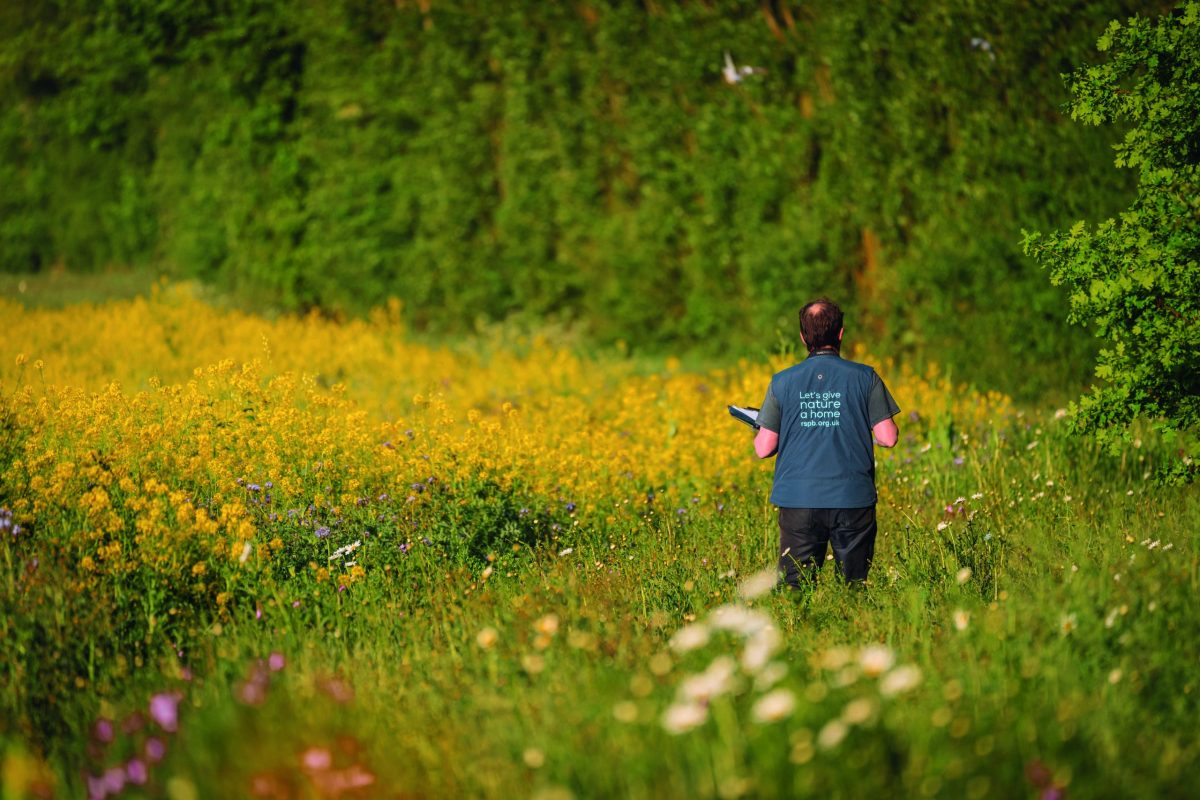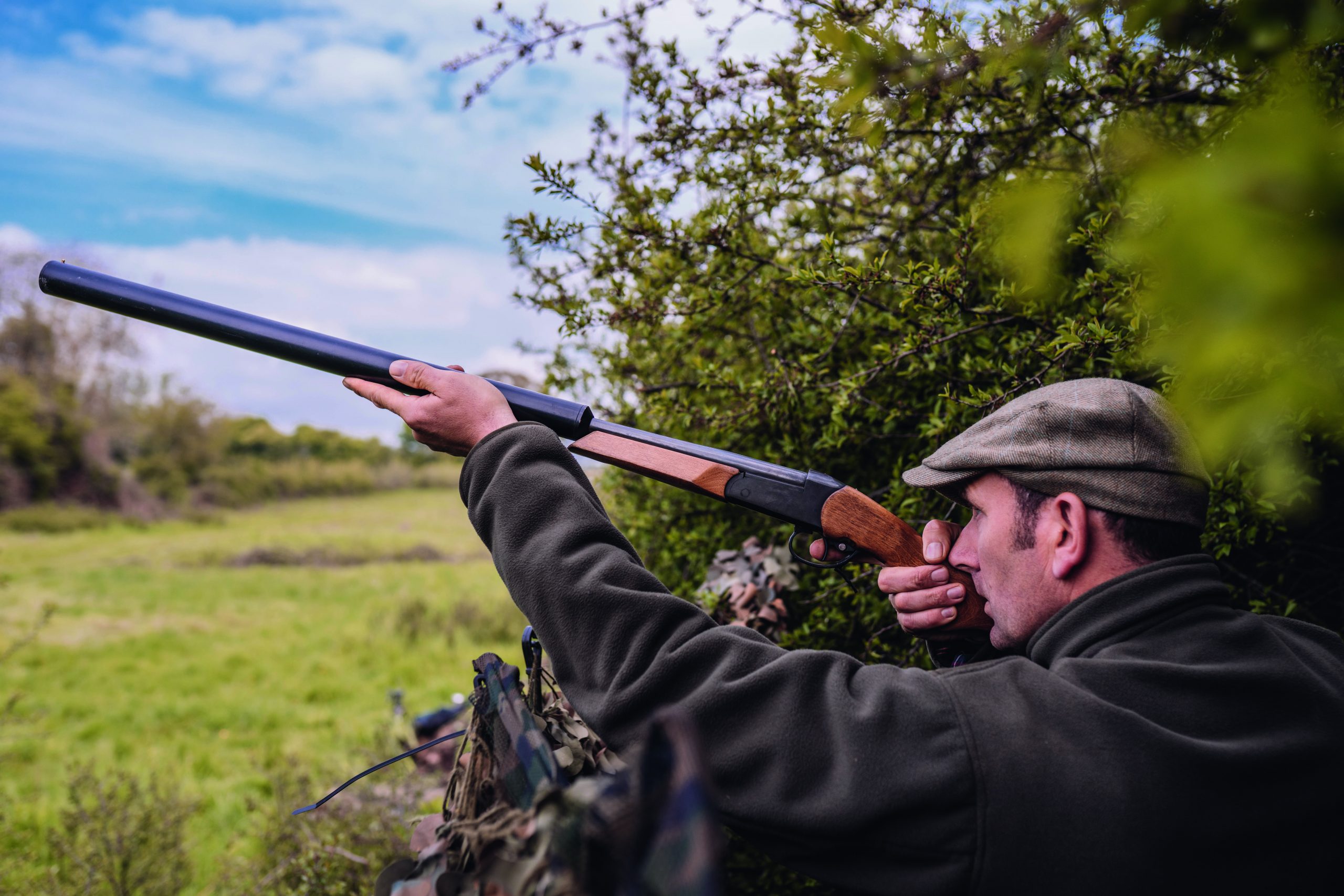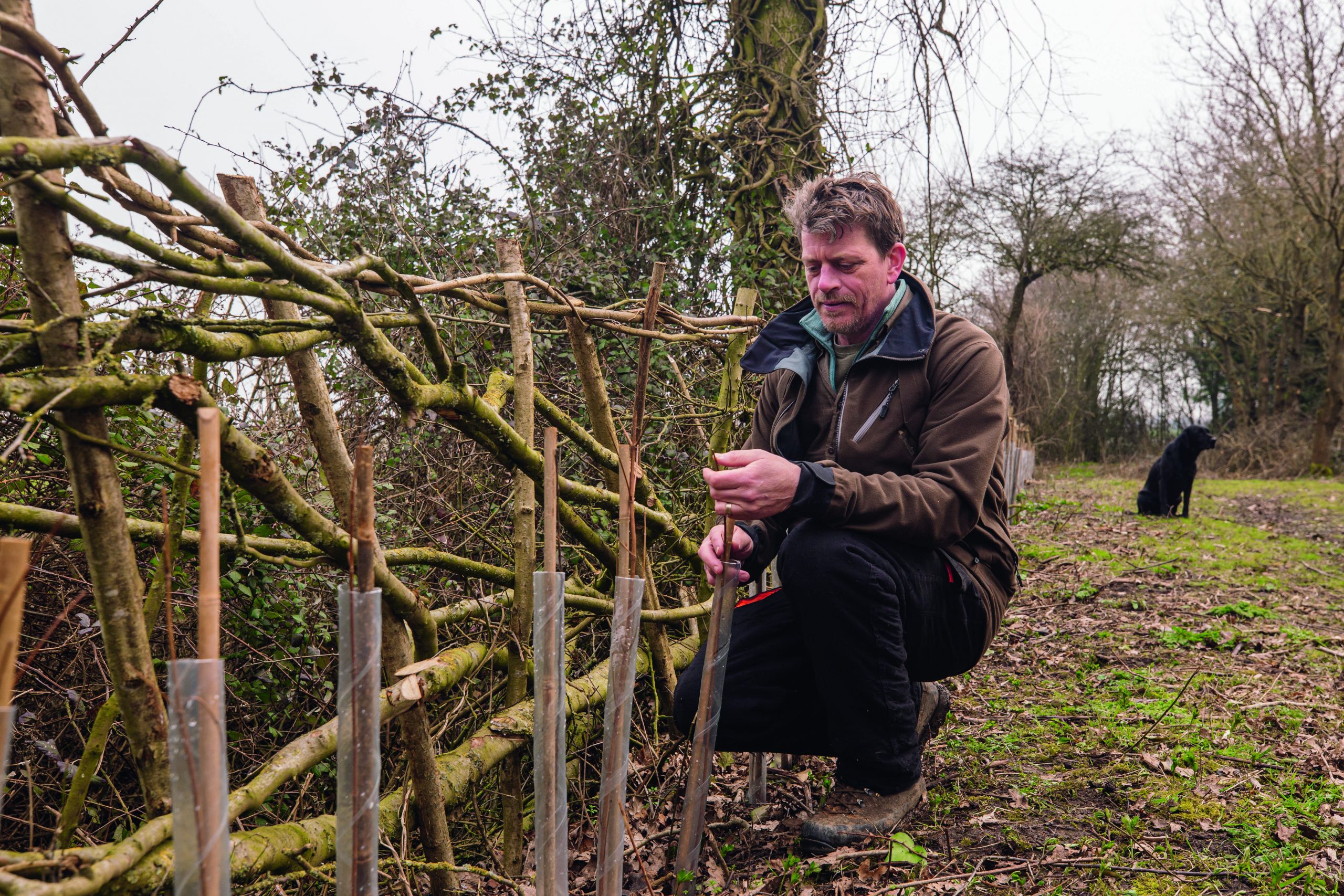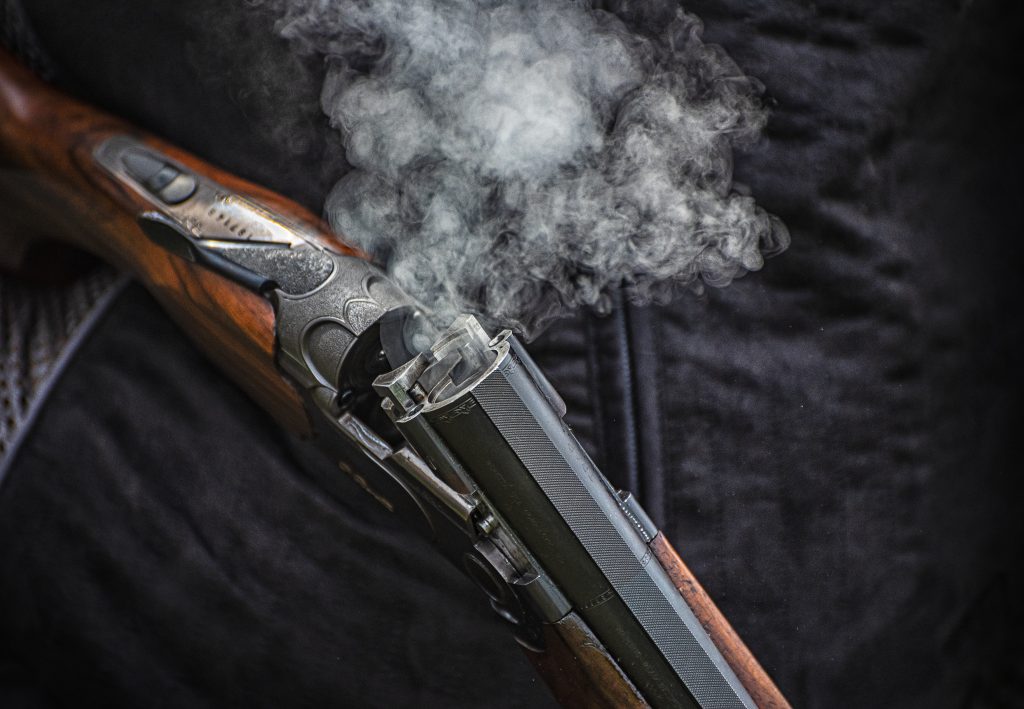Win CENS ProFlex DX5 earplugs worth £1,149 – enter here
RSPB CEO Beccy Speight interview on shooting and conservation

My vehicle’s windscreen once sported three car stickers. Beneath a Game Conservancy partridge and a Back British Farming tractor, an avocet in a white roundel delved into the letters R, S, P and B. No longer is this the case. The divide between the RSPB and the shooting community has widened, becoming increasingly visceral over the past two decades.
The charity’s recent alliances with pressure groups and its own negative lobbying on topics such as general licences, gamebird releasing and moorland management have left many former allies feeling at odds with an organisation they once largely supported.
In an effort to discover why the shooting community has seemingly so fallen out of love with the RSPB, we invited its CEO, Beccy Speight, to visit Flea Barn. Our aim was two-fold; to let Beccy see first-hand how shooting and conservation aid modern farming and stewardship in bringing about meaningful nature recovery, and to learn where our similarities end and our differences begin.
Beccy Speight, CEO of the RSPB, visits Flea Barn to discuss the charity’s stance on shooting
Beccy’s tour was led by farmer Ed Nesling and Richard Gould, my Purdey Award-winning business partner. I trailed behind, accompanied by Eliza Leat and Mark Nowers, the RSPB’s Operation Turtle Dove officers for Suffolk and Essex, who have helped us survey the bird life of Flea Barn.
We stopped to watch a flock of yellowhammers flit away from a laid hedge, which gave us a chance to pause and get down to the business of the visit. Richard raised a topic we repeatedly returned to — the lethal control of pests and predators.
Richard pointed at the cloud of farmland birds: “We have all these because of our three-legged stool method of management: habitat, food and pest control. Why doesn’t the RSPB do the last leg?”
Beccy seemed taken aback. “We do though; legal predator control is OK by us,” she replied. I watched Richard’s lips purse, an expression I know all too well to mean “I don’t believe you”. He pushed Beccy further, asking her to explain why the RSPB seemed loath to promote this conservation practice.
Beccy responded: “We will only use lethal control as a very last resort; we would always try to use other options on our reserves.”

Richard Gould supports the ‘three-legged stool’ method of management: habitat, food and pest control
Protocols
I asked what protocols the RSPB uses to sanction lethal control on its land, noting that in 2018 more than 950 deer, 598 foxes and over 1,400 corvids, geese and gulls were either trapped, shot or had nests destroyed. Beccy explained that a warden must make a case for lethal control, after which the threatened species is observed for a period. The application then passes to an ethics committee, which may or may not grant permission to kill the predator(s).
Ed interjected: “Won’t the thing you are trying to protect be killed and eaten by the time you’ve done all that?” Beccy stayed quiet momentarily, watching a charm of goldfinches flush out of some Moir Mix before concluding: “That is how we have to do it.”
We made a turn along another wide margin as hares out on the stubble scuttled away, and we switched to the thorny matter of protected predators. Ed told Beccy about his experience last season rolling wheat, when a flock of buzzards followed his tractor like gulls. Through the cab window, he counted 15 of the raptors methodically snaffling up leverets, and he filmed the scene on his mobile phone.
Richard explained to Beccy how East Anglia has seen a remarkable upturn in buzzard numbers from their near-extinction levels in the 1970s, and how this unchecked increase is now negatively impacting hares and ground-nesting species such as lapwings and grey partridges. Admirably, Beccy didn’t immediately spring to the raptors’ defence; while she was in no hurry to advocate applying for a control licence, she empathised with these real-world challenges of practical conservation.

Maintenance carried out by shoots retains habitats for a variety of farmland birds
The longer we talked, the more I realised her role as the CEO of the RSPB is a balancing act. She clearly accepted Richard’s time-served view that there are circumstances in which lethal pest control is essential — the RSPB has, after all, recently culled red-listed herring gulls and amber-listed barnacle geese to protect wader colonies.
Beccy confided that whenever the RSPB releases details of its own lethal pest control efforts, “there is frequently backlash from a certain section of our supporters. I know this has lead to people resigning their membership.” She added: “It isn’t as bad as the abuse I receive from some of the shooting lobby.”
I genuinely sympathised with her as a fellow recipient of online abuse. We mutually agreed that social media is all too often the root of the rift between the RSPB and shooting.
This led us neatly on to the ever-growing schism over reared game. Flea Barn plays host to a cocks-only pheasant shoot: for the past three seasons, 200 cocks have been released, while all hens are wild. When Ed explained this state of play to Beccy, she was at pains to point out: “We [the RSPB] are not anti-shooting; what we aren’t in favour of are shoots that release thousands of birds.” Richard posed the obvious question: “How many birds are too many?” She replied: “There are 57 million pheasants and French partridges released [annually]. We believe that is ecologically unsustainable; we think a maximum figure of 3,000 per shoot is sustainable.”
The shoot hosted by Flea Barn only releases cock pheasants; all the hens are wild
Density
Richard pointed out the GWCT had proved that numbers were not the issue; the important factor that can negatively impact the environment is the density of released game, explaining: “If you release 3,000 birds on a 300-acre farm it is a different matter to releasing the same number on a 3,000 acre farm.”
I asked Beccy if she had read the GWCT’s five-year-long study on sustainable gamebird releasing, which highlights density rather than numbers as a major factor in ecological balance. She responded: “We might not agree with the GWCT’s views on releasing. I think we agree on numbers.”
Our chat then moved on to how we can reach the ‘middle ground’ she claims the RSPB seeks. Beccy repeated: “All we want is what is best for nature, and we are happy to work with shoots in the middle ground, ones that don’t release thousands of birds.”
I asked: “Do you think that a consensus is achievable in the light of comments made about people who enjoy shooting by your president, vice-presidents and ambassadors? These seem far removed from the middle ground.” I gave Beccy the example of the RSPB’s new president Dr Amir Khan’s tweet last October, in which he said: “Shooting birds just for pleasure doesn’t make you more of a man/woman/person but it does make you less of a human being.” Beccy countered: “I can’t tell them what to say. They are volunteers, not staff.”
I was going to recount other recent incendiary remarks made on social media by public figures who hold honorary positions within the RSPB but chose not to — Beccy was our guest.
Richard then opined: “It’s not just what the RSPB says, it’s the tone and the terms you use — is calling a pheasant ‘non-native biomass’ helpful? Why not put your name to the GWCT’s Code of Good Shooting Practice? That would mean a lot to many in the shooting community.”
Beccy repeated her standpoint: “The RSPB is not anti-shooting. We agree there are benefits shooting can bring for wildlife”.
Richard countered: “Why then don’t you publicly support shooting’s best practice? Would you, for example, be prepared to include an article in your members’ magazine about what you have seen here?”
Beccy was non-committal to this idea, but reiterated: “We are keen to work with shoots in the middle ground.”
Shooting and conservation go hand in hand, something the team at Flea Barn are keen to point out
Density
Our circular walk brought us back to our vehicles and we bade Beccy goodbye. We were very grateful to her for taking time to listen to us. Richard and I sat on our tailgates and discussed what we had learned.
“You know,” Richard said, “not once did I hear her suggest areas where the RSPB could change; it’s always we who must do that. That isn’t really middle ground, is it?”
Richard has a good point. Over to you, Beccy.
Related Articles
Get the latest news delivered direct to your door
Subscribe to Shooting Times & Country
Discover the ultimate companion for field sports enthusiasts with Shooting Times & Country Magazine, the UK’s leading weekly publication that has been at the forefront of shooting culture since 1882. Subscribers gain access to expert tips, comprehensive gear reviews, seasonal advice and a vibrant community of like-minded shooters.
Save on shop price when you subscribe with weekly issues featuring in-depth articles on gundog training, exclusive member offers and access to the digital back issue library. A Shooting Times & Country subscription is more than a magazine, don’t just read about the countryside; immerse yourself in its most authoritative and engaging publication.







